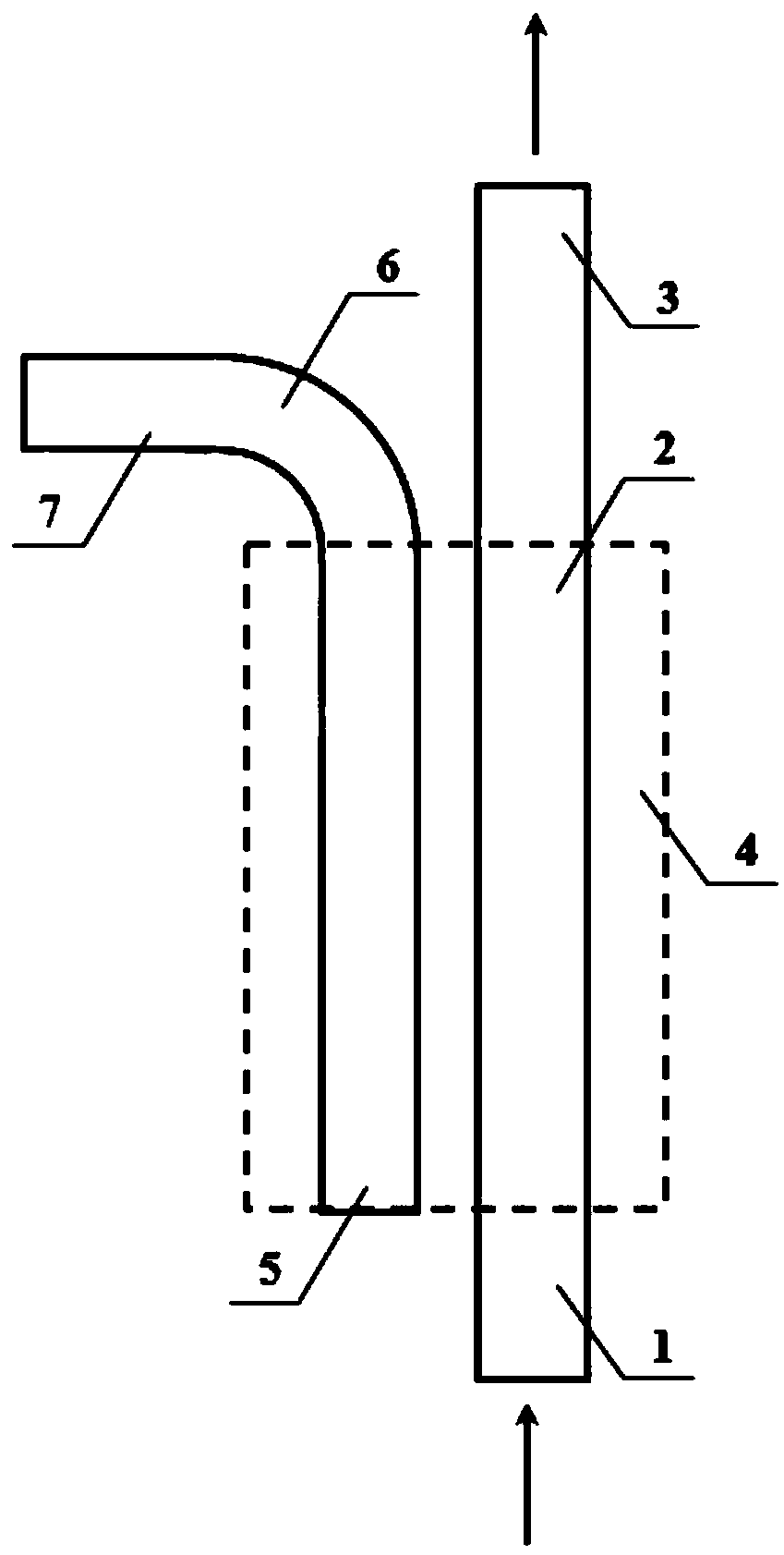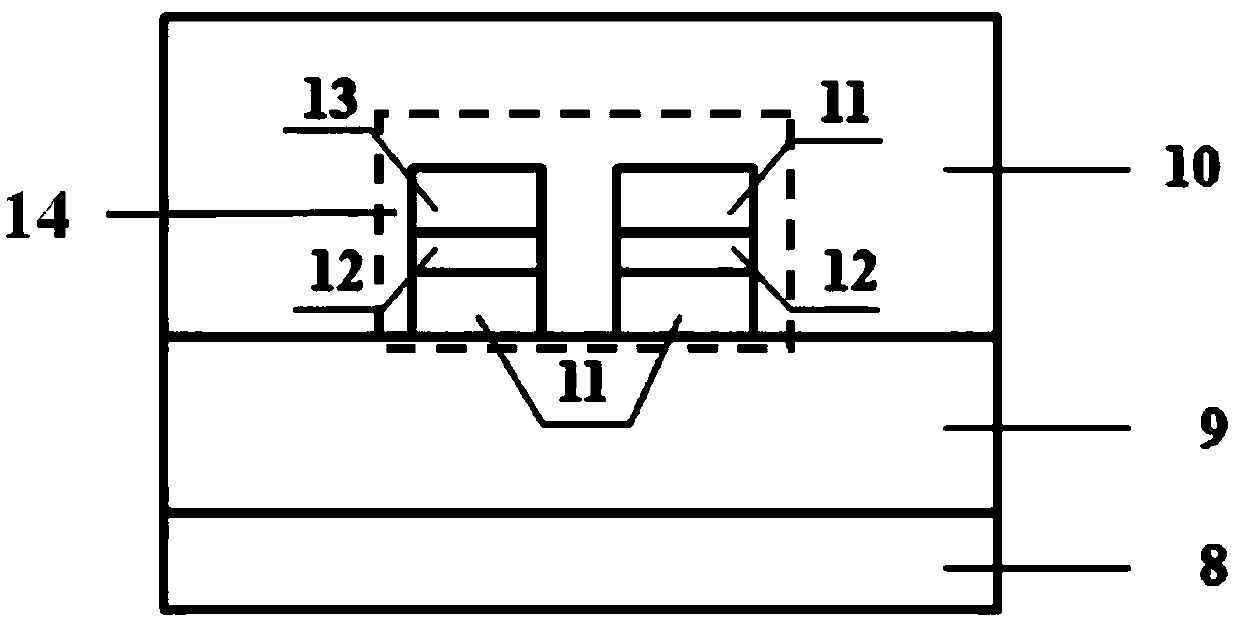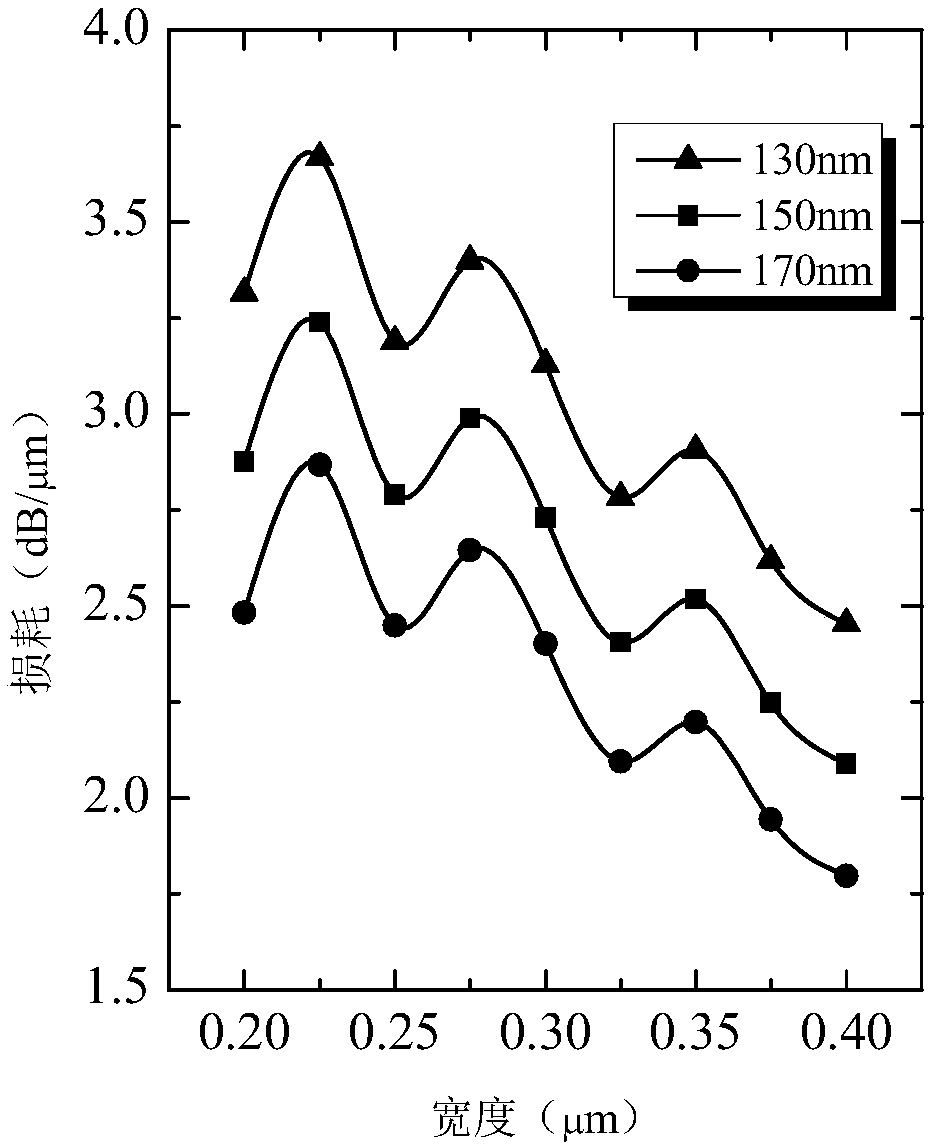A silicon-based te-mode polarizer based on an asymmetric directional coupler
A directional coupler, asymmetric technology, applied in the field of integrated optics, can solve the problems of high insertion loss and large transmission loss of the mode analyzer, and achieve the effects of reduced insertion loss, low insertion loss and large operating bandwidth
- Summary
- Abstract
- Description
- Claims
- Application Information
AI Technical Summary
Problems solved by technology
Method used
Image
Examples
Embodiment 1
[0038] Such as figure 1 and figure 2 As shown, the analyzer consists of a silicon-based substrate 8, a buried oxide layer 9, an analyzer component 14, and an upper cladding layer 10 from bottom to top, wherein the buried oxide layer 9 is grown on the upper surface of the silicon-based substrate 8, the upper The cladding layer 10 covers the upper surface of the buried oxide layer 9, and the analyzer component 14 grows horizontally on the upper surface of the buried oxide layer 9 and is covered by the upper cladding layer 10;
[0039] The polarization analysis unit 14 includes an input channel 1, a right straight channel 2, an output channel 3, a left straight channel 5, a left curved channel 6 and a left horizontal channel 7;
[0040] One end of the right direct channel 2 is connected to the input channel 1, and the other end is connected to the output channel 3;
[0041] One end of the left curved channel 6 is connected to the left straight channel 5, and the other end is c...
Embodiment 2
[0055] Such as Figure 8 As shown in the schematic diagram of the improved polarization analyzer 14 (silicon-based substrate 8, buried oxide layer 9 and upper cladding layer 10 are exactly the same as those in Embodiment 1), the improved polarization analyzer 14 includes an input channel 1 and a right through channel 2 , output channel 3, left straight channel 5, left curved channel 6 and left horizontal channel 7;
[0056] One end of the right direct channel 2 is connected to the input channel 1, and the other end is connected to the output channel 3;
[0057] One end of the left curved channel 6 is connected to the left straight channel 5, and the other end is connected to the left horizontal channel 7; wherein, the output channel 3 and the left curved channel 6 are located at the same end;
[0058] The input channel 1, the right straight channel 2 and the output channel 3 are all silicon-based horizontal groove waveguides, and the left straight channel 5, left curved chann...
PUM
 Login to View More
Login to View More Abstract
Description
Claims
Application Information
 Login to View More
Login to View More - R&D
- Intellectual Property
- Life Sciences
- Materials
- Tech Scout
- Unparalleled Data Quality
- Higher Quality Content
- 60% Fewer Hallucinations
Browse by: Latest US Patents, China's latest patents, Technical Efficacy Thesaurus, Application Domain, Technology Topic, Popular Technical Reports.
© 2025 PatSnap. All rights reserved.Legal|Privacy policy|Modern Slavery Act Transparency Statement|Sitemap|About US| Contact US: help@patsnap.com



